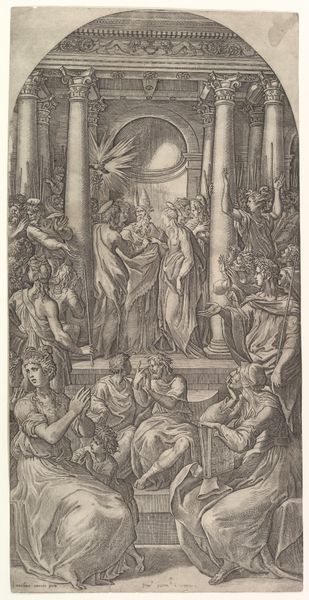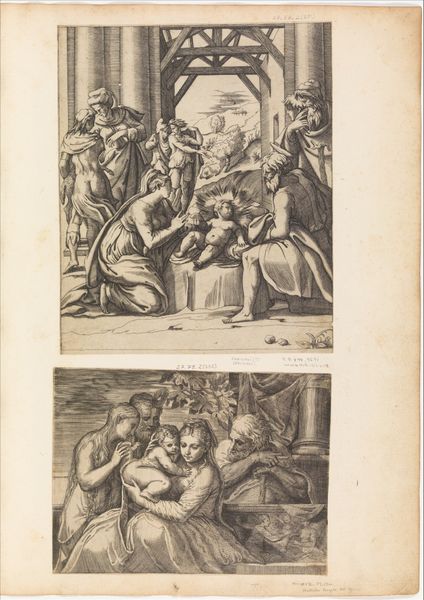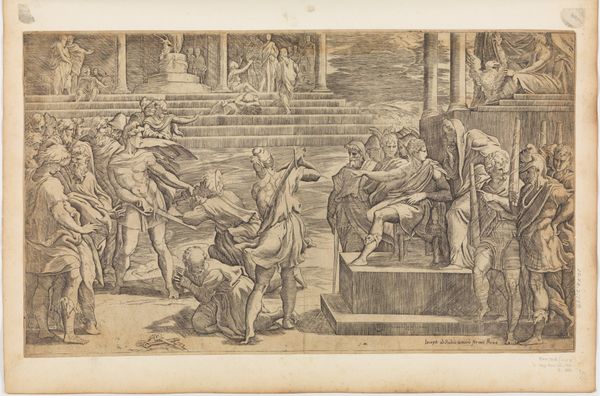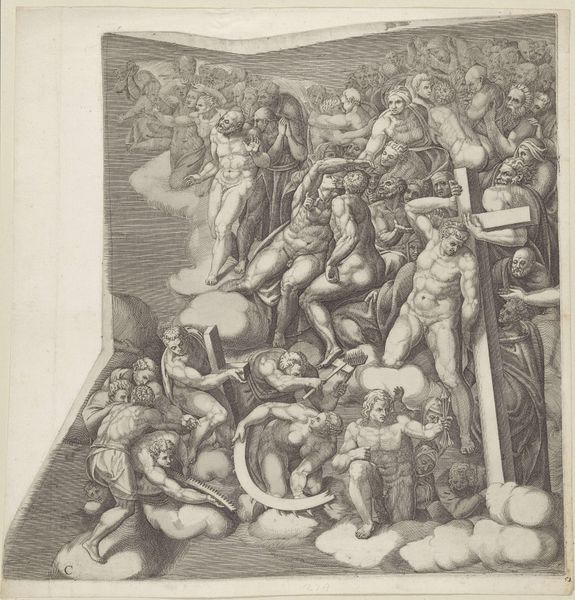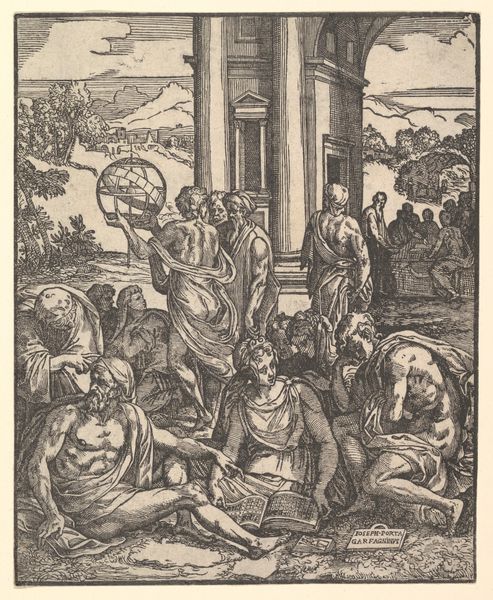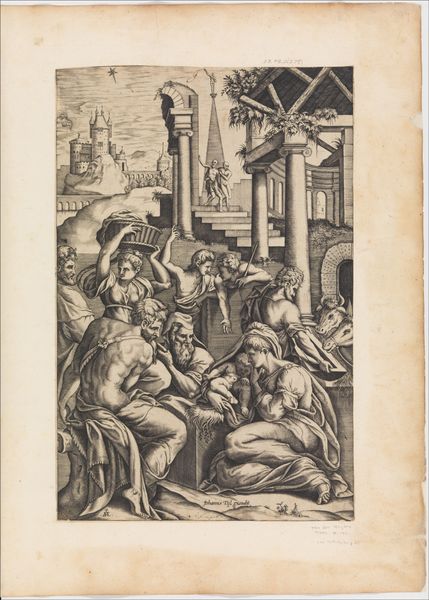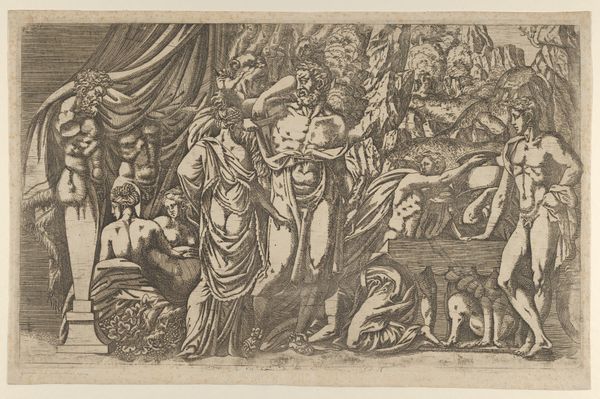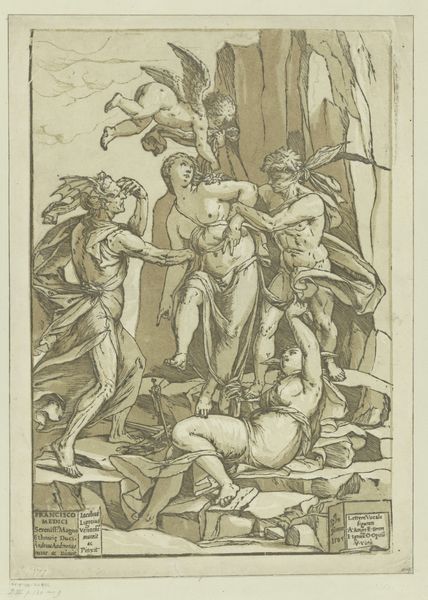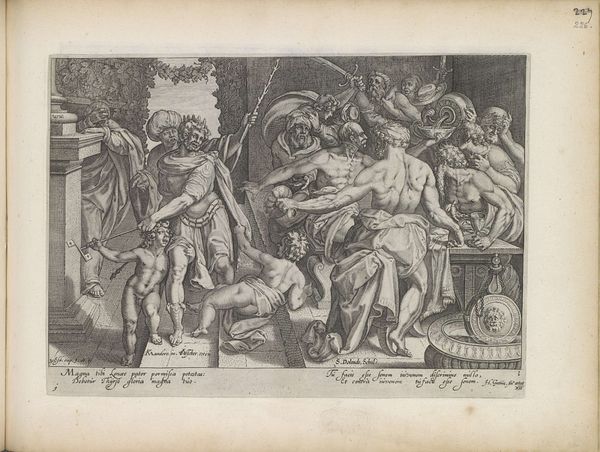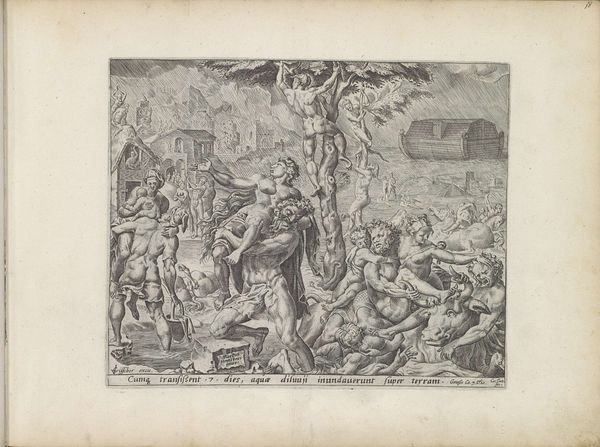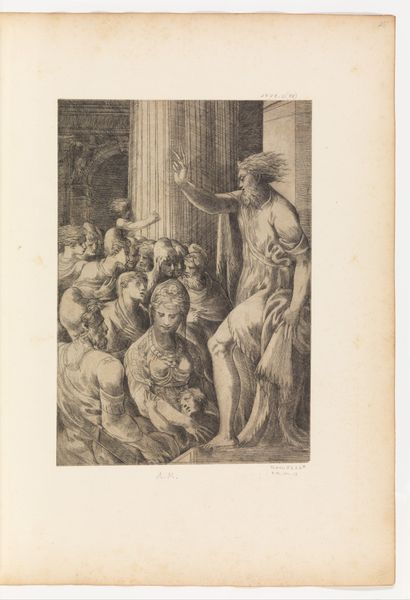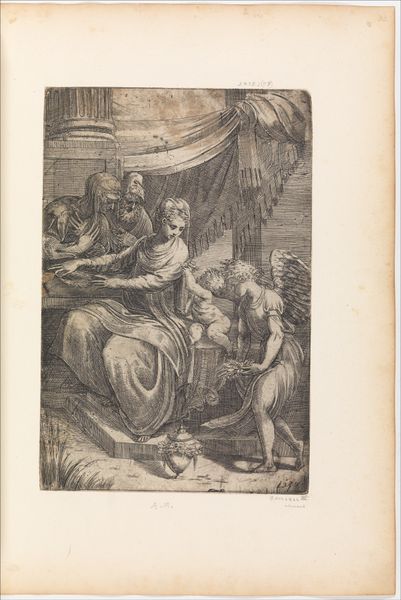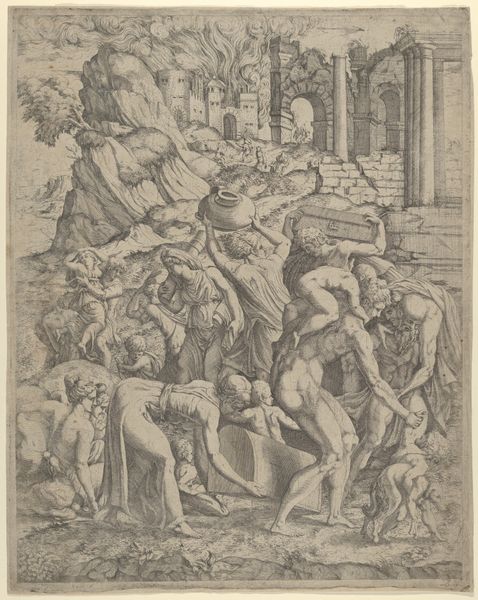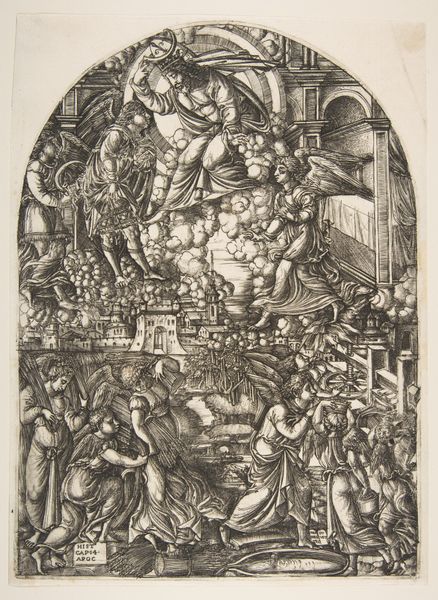
drawing, print, engraving
#
drawing
#
narrative-art
# print
#
figuration
#
men
#
line
#
history-painting
#
italian-renaissance
#
engraving
#
virgin-mary
Dimensions: sheet: 17 15/16 x 9 1/8 in. (45.6 x 23.2 cm) mount: 22 x 16 in. (55.9 x 40.6 cm)
Copyright: Public Domain
Editor: So this is "Marriage of the Virgin," made between 1520 and 1531 by Giovanni Jacopo Caraglio. It's an engraving, so a print. I'm struck by all the intricate line work, especially when you consider how many prints were made from one plate. What's significant about creating narrative art this way? Curator: What strikes me is how this image, designed for reproduction, becomes a commodity, disseminated to a wide audience. Engravings like this allowed the stories and styles of the Italian Renaissance to be consumed far beyond the elite circles of patrons who originally commissioned paintings. Think about the engraver: what were the labor conditions to create something that can be infinitely copied? Editor: So, even though the image depicts a holy scene, the means of production themselves are changing the art’s role in society? It feels like a contradiction. Curator: Precisely! We have to ask ourselves, what did this widespread circulation mean for the perceived value – both spiritual and monetary – of religious imagery? How might the increased availability affect the demand for original paintings and other, more exclusive art objects? It transforms access. Editor: It makes you wonder about the effect on other artisans, too, those producing more "high art." What a democratization that this becomes so ubiquitous. Curator: Exactly. These engravings acted as both advertisement and template, and created opportunity. I see both craft and cultural exchange at play, with both artists and workshops referencing Caraglio’s production for their own work, leading to shifts in patronage. This act becomes a social process as well as material process. Editor: I see it so differently now; I'll have to keep the circulation and labour in mind next time I see art from this era. Thanks for opening my eyes to how prints worked then! Curator: Indeed, every artifact carries the mark of the hand that crafted it, whether we see it directly or through layers of mechanical reproduction. And so, to consider what gets created is to know who it was that did the labor.
Comments
No comments
Be the first to comment and join the conversation on the ultimate creative platform.
